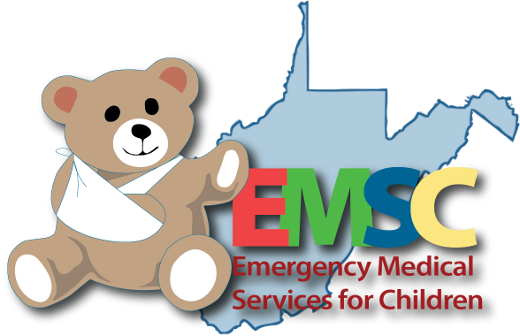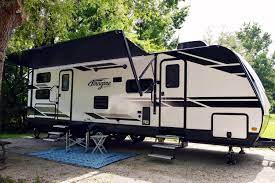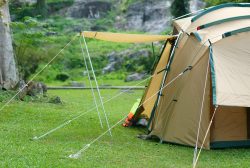
Pediatric Symposium
Join us in #AlmostHeaven
september 29 - october 2, 2024
West Virginia EMS for Children works to improve outcomes for children across prehospital and emergency department settings. This year, the EMSC is celebrating its 40th anniversary. Join us in celebrating this milestone by attending our first multi day Pediatric Symposium. The conference will offer numerous pediatric courses with hands-on training opportunities, endless networking with fellow providers from across our state, region, and east coast. You will leave with a renewed passion and excitement to care for the pediatric population in your community. Did we mention the amazing food and entertainment? We’ll see you in September!
Class Descriptions
Wise Five (The Kyle Group)– In this course we will review the complex situations that come with a sudden cardiac arrest of a student athlete during a school game/practice. In addition, this course will cover two sets of guidelines for handling sudden cardiac arrest of the student athlete. The material covered goes over the first five steps of what to do during the initial resuscitation, and then after EMS arrives on the scene, the second five steps of what should be done after advanced care has arrived. This course will better prepare EMS to work with athletic staff at both the middle and high school level. Along with covering additional topics such as: football pad removal, mechanical CPR, multi-agency response, team building, and critical thinking.
Button Battery Ingestion (Johana McKitrick, CAMC Women & Children’s Hospital)- During this course we will look at what button batteries are and how/when they are used and the complications of ingesting one. Button batteries pose a grave threat to children when ingested and time is of the essence. We will review signs and symptoms of ingestion, interventions, and complications.
Understanding Abusive Head Trauma: A Program for First Responders (Morgan Scaggs, created by Dr. Melissa Currie, Norton Children’s)- We will be taking an in-depth look at abusive head trauma and injuries associated with abusive head trauma.
Kids Are Not Lawn Darts (Children’s National Hospital)- A review of pediatric trauma in the case-study style class. Everything from burns to non-accidental trauma will be touched on!
Give Me A Minute to Google That…(Children’s National Hospital)- In this review of special needs kids, we’ll look at some interesting cases and put our hands on trachs and technology!
Respiratory Distress: Beyond the Nebulizer (Children’s National Hospital)- How do I treat respiratory disorders in kids and what if I have to intubate them? Learn about all things airway and breathing!
Burns! (Debbie Harrell, Shriner’s Hospital for Children)- Through current, evidence-based education, the health care professional will be provided with what is best practice in the care of acute care of the burn patient. The presentation will deliver case studies that highlight the role of the professional in the initial management of a burn patient including discussion of fluid resuscitation, intubation decisions, inhalation injuries, determining burn size, and treatment interventions. Vivid photographs and interactive slides complement this session.
Landmark Lawsuits & Lessons Learned, aka The Good, The Bad & The Ugly (Scott Deboer, Pedi-ED-Trics)- They did what??? Experienced emergency healthcare professionals know that even the most bizarre circumstances are seemingly everyday occurrences. And when it comes to healthcare, you can’t make this stuff up. Focusing on closed medical malpractice cases, with a focus on pediatrics, this presentation reviews the “Who, What, When, Where, and Why,” and the ever important, “What happened in court?” Learn to distinguish the fact from the fiction, what went right and what went wrong, and how to avoid becoming a part of the next “interesting” case. Learn to identify the key principles essential to safe practice, and what to do to avoid, or at least survive, a medical malpractice suit!
Stay tuned! There are many more under development…
Once you register for the event, you will receive an email from Erin Timbrook (erin.j.timbrook@wv.gov) with instructions on how to register for your classes.
Book Your Lodging

Select which Lodging you’d like and click Book Now.

After booking your lodging, you will register for the conference and purchases additional meals for your guests. You will also be able to book activities during this time.

Finish Checkout online and get ready for your next adventure in #AlmostHeaven
Yamagata Lodging full?
No problem! Stay at one of these near by hotels:
– Comfort Inn New River Oak Hill
– Hampton Inn Beckley
– Courtyard Beckley
– Comfort Inn Beckley
– Tru by Hilton Beckley
– Holiday Inn & Suites Beckley
Register & Book Meals for guest

Provider
Registration
-
Includes:
- All Meals
- Classes You Register For
If Provider Registration is full, please contact Erin Timbrook (erin.j.timbrook@wv.gov) or Robin Jones (robin.a.jones@wv.gov) to get on the wait list.
The adventures...
While attending the EMS Pediatric Symposium, you will have the opportunity to chose from multiple activities including Ziplining, Shotgun Shooting, Climbing, Fishing, or Hiking. Fishing and Hiking are provided at no additional cost to you and do not require preregistration.
All activities require Preregistration. Registration closes September 15, 2024.
Traveling to the Summit
Address for Google Maps or Waze:
Yamagata Hall & Lodge
Mt Hope, WV 25880
The Summit is accessible through the south gate in Mt Hope via WV-Route 61.
Frequently Asked Questions
Yes, all meals are included in the price of your registration.
Additional guest must purchase their meals separately through the link provided above.
Menu:
Sunday Night: Heavy Hors d’oeuvres
Monday Breakfast: Classic Hot Breakfast with Biscuits & Gravy
Monday Lunch: Boxed Lunch with Hoagies, Salad, Chips & Dessert
Monday Dinner: Smoked House BBQ with Pulled Pork & Smoked Brisket and all the fixins including S’mores and a Sunday Bar
Tuesday Breakfast: Continental Breakfast with Breakfast Sandwiches
Tuesday Lunch: Southwest Taco Bar
Tuesday Dinner: Summit Cookout with Cupcakes and Sundae Bar
Wednesday Breakfast: Classic Hot Breakfast with Pancakes
Registration for the event closes once we reach 200 registrants or on September 1, 2024.
Registration for Activities and Guest Meals closes on September 15, 2024.
In Fayetteville (within 15 minutes of the North Gate):
- Wisteria’s Gifts – 147 S. Court St.
- Dove Village Shops (Country crafts, linens, unique decor) – 519 Hinkle
- The New River Gorge Bridge & Visitor’s Center (a National Park offering hiking, river rafting and more)
In Beckley:
“Exhibition Coal Mine” is a Coal town example to tour. Miners guide a riding tour into a mine shaft with a historical glimpse of what mining was like in the height of the business during Rocket Boys years.
Tamarack Marketplace is a MUST SEE for shopping (& lunch) as it is a WV Crafter’s Guild shopping of everything imaginable! - 1 Tamarack Park in Beckley, about 30 min from SBR gate
Other Options
Autumn is spectacular for Appalachian color—a drive through the countryside is breathtaking
WHERE TO EAT?
Mexican:
- Campestres at Harpers Road
- Don Rizo Mexican Kitchen and Cantina in Downtown Fayetteville
Steakhouses:
- Outback at Harpers Rd
- Texas Roadhouse on Business #19 in North Beckley
- The Char in Beckley – https://www.the-char.com/
Pizza:
- Pies & Pints – Serves drinks and Artisan Pizza in Downtown Fayetteville….15 min from SBR gate – 219 W. Maple https://piesandpints.net/
About the Summit...


Nestled in the wilds of West Virginia, the Summit Bechtel Reserve is an expansive 10,000-acre property boasting world-class facilities, scenic views, lodging, and recreational activities that are second to none. You are sure to have a “mountain top” experience when you host your next event at the Summit. Strategically located close to major highways, the Summit is within 500 miles of 63% of the US Population and easily reached by all surrounding States.





